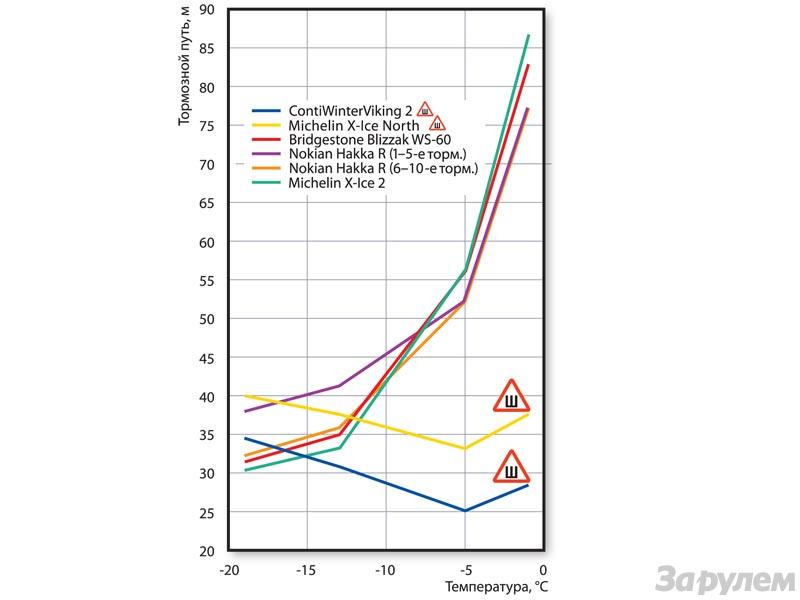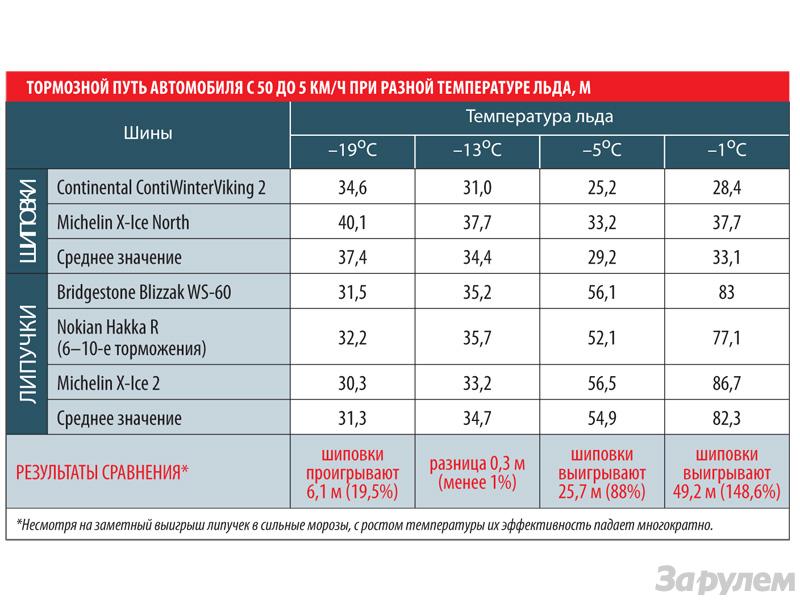We’ve all seen North American tire tests where studless tires outperform studded tires in icy conditions. How does that happen?
It’s all about the temperature of the ice. When the ice is very cold, studs cannot dig into it. The studs will scratch and chip the ice – improving the available traction for the next driver – but it’s the rubber compound and tread siping providing most of the grip, so studless winter tires have an advantage in those conditions. But the advantage is relatively minor. Tests showing studless tires to have a significant advantage usually involve the comparison of the best modern studless designs against a much older or cheaper studdable winter tire with harder rubber compounds and basic TSMI studs, performed on very cold ice. Typically, ice temperature will not be specified at all in tire tests.
Studs are most effective on the slipperiest and most dangerous of ice; ice that is smooth, warm, and wet. People often refer to this as “black ice”. On this surface, even the soft and heavily siped rubber of the most advanced studless winter tires will provide very little grip, while the grip of studded tires will be competent and consistent in these conditions, just as they are in all other winter conditions.
Russian automotive journalists tested some of the best studless and studded tires on ice at various temperatures, including such darlings of the studless tire market as the Bridgestone Blizzak, Michelin X-Ice, and Nokian Hakka R. The studded tires in the test are factory studded European tires from Michelin and Continental that were unavailable in Canada, but would be comparable to the Nokian Hakka5. The results were shocking. The following graph shows the braking distance, in meters, against the ice temperature, in degrees Celcius. The chart shows the braking distances, in meters, of the various tested tires, along with averages, at each tested temperature.
The studless tires performed well in the cold. At -19C, the studded tires took 19% longer, on average, to come to a stop. By -13C, the tires performed equally well, with less than 1% difference between the studless and studded tires. After that, the braking distances of the studless tires begin to increase dramatically. At -5C, they required 88% more distance to brake than the studded tires. At -1C, the difference was 149%.
Think about that. If you’re approaching a busy intersection with unexpected black ice at 50 km/hr and have 110 feet to stop, you will safely come to a halt with a quality studded tire. With the best studless tires you can buy – the ones that Consumer Reports and other publications recommend – you’ve barely scrubbed off any speed and will slide another 170 feet beyond the intersection, assuming you’re fortunate enough that a collision doesn’t occur first. Imagine the differences in control at highway speeds on that surface.
This is why studded tire users love their studs. Once you’ve experienced the ability to drive fearlessly in winter without any danger from unexpectedly slippery road conditions, you’ll never want to go back.



Too bad there was no testing at temps below -19C like we routinely experience in SK. After switching to studded Nordman 7’s following years running X-Ice3s, ExtremeWinterContacts, and Blizzaks I’d swear the studs have an advantage on polished ice at -30C too. I can take off in 1st gear from an icy intersection where I was doing 2nd gear starts and feathering the throttle before. I drive a M/T car. Stopping feels shorter too. Cold ice may be hard, but it’s not as hard as tungsten carbide (neither is concrete). Unfortunately I don’t have data to share, just my personal experience. Wonderful article – thanks for sharing.